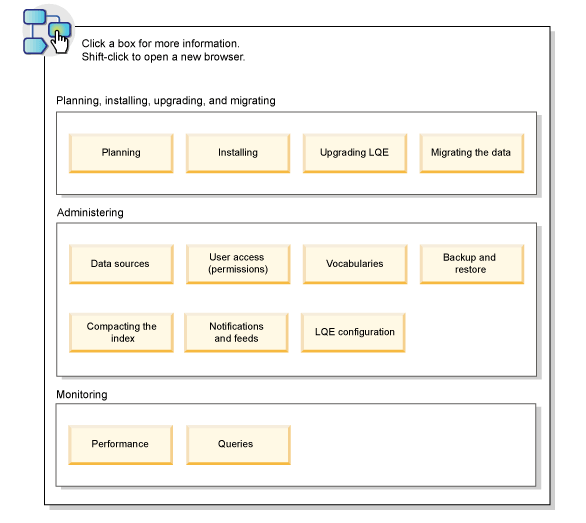Getting started with administering Lifecycle Query Engine
As a Lifecycle Query Engine
(LQE) administrator, you might be responsible for a wide range of activities, including planning,
installation, configuration, and management of the LQE servers
in your environment. If you are new to LQE, this
information will help you understand how it works, and how to ensure optimal
performance.
The boxes in the following figure are links to corresponding topics that provide more information.

Planning a Lifecycle Query Engine implementation
When you are deciding whether to use Lifecycle Query Engine to index
the data from across your lifecycle management tools, there are several details to consider. Because
the volume of data to be indexed can be considerable, and several factors can impact performance,
you must carefully review the system requirements, deployment topologies, and best practices to
ensure that the system performs as expected. The following resources can help:
Installing Lifecycle Query Engine
Lifecycle Query Engine is a
Jazz® Reporting Service
component that is available in the web installer for IBM Engineering Lifecycle
Management.
Note: While the default installation and setup using the wizard leads you to install all of the
applications on a single server, this topology is not necessarily the best choice. Carefully
consider the options. You can install LQE on
separate servers, and even deploy it across several nodes, each with their own external relational
database..
For more information, see the Interactive installation
guide.Upgrading Lifecycle Query Engine
The following resources help you understand the process for upgrading LQE and the IBM Engineering Lifecycle
Management applications: